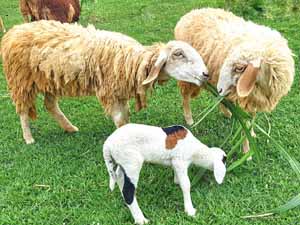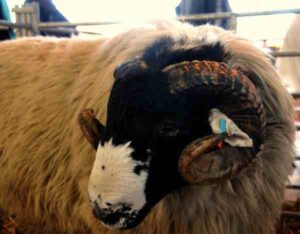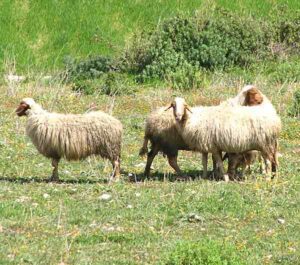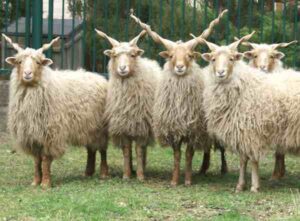The Balkhi sheep is a breed of domestic sheep which was originated from Afghanistan and North-western Pakistan.
It is of the fat-tailed mutton type sheep breed which is raised mainly for meat production.
But the breed is also good for producing wool. Read some more information about this sheep breed below.
Balkhi Sheep Characteristics
The Balkhi sheep are medium to large sized animals. They are black, grey or tan in coloration. They have somewhat long ears, and their body is muscular and compact.
The tail is fat and tucked, and both rams and ewes are horned. The rams generally weight around 5.2 kg at birth, and the ewes around 3.8 kg.
Average body height of the mature rams is around 87 cm at the withers, and around 74 cm for the ewes.
Average live body weight of the mature Balkhi sheep is around 70 kg. Photo and info from Wikipedia.
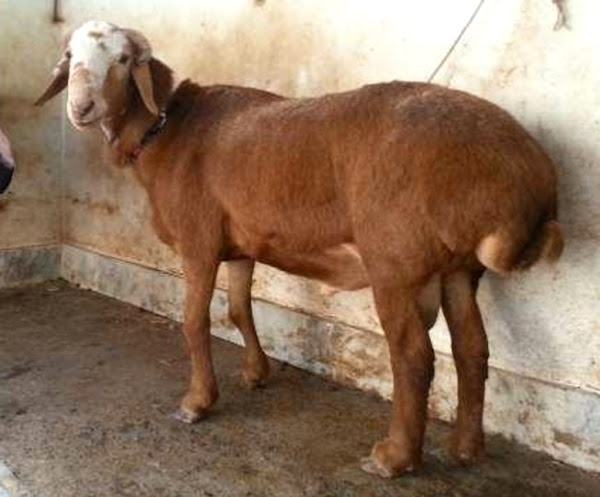
Uses
The Balkhi sheep is a meat sheep breed. It is raised mainly for meat production, but also pretty good for producing wool.
Special Notes
The Balkhi sheep are hardy animals, and they are well adapted to their native climates.
Today they are raised mainly for meat production, but are also good for producing wool.
They have a low fiber density, and they approximately yield 2 kg of coarse wool with an average 43.5 micrometer diameter.
The ewes are pretty good milkers and they produce enough milk for their lambs.
The ewes generally lactate for about 105 days and produce around 60 kg of milk. However, review full breed profile of the Balkhi sheep in the following chart.
| Breed Name | Balkhi |
| Other Names | None |
| Breed Purpose | Mainly raised for meat, but also good for wool |
| Special Notes | Hardy animals, well adapted to their native climates, today raised mainly for meat, but are also good for producing wool, low fiber density, yield approximately 2 kg of coarse wool with an average 43.5 mm diameter, the ewes are pretty good milk producers and produce enough milk for their lambs |
| Breed Size | Large |
| Weight | Around 70 kg |
| Horns | Yes |
| Climate Tolerance | Native climates |
| Color | Black, grey or tan |
| Rarity | Common |
| Country/Place of Origin | Afghanistan and North-western Pakistan |

